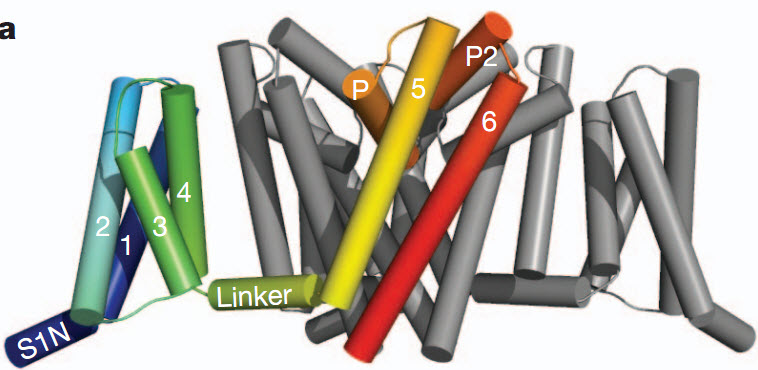July 14, 2011 by Editor (From Kurzweil)

Voltage-gated sodium channel (credit: Jian Payandeh et al./Nature)
Scientists at the University of Washington in Seattle have determinedthe atomic architecture of a sodium channel at .27 nanometers resolution.
Sodium channels are pores in the membranes of excitable cells — such as brain nerve cells or beating heart cells — that emit electrical signals. Sodium channels selectively open and close to allow the passage of millions of tiny charged particles across the cell membrane. The voltage-gated flow of sodium ions generates electrical current in the brain.
Mutations in voltage-gated sodium channels underlie inherited forms of epilepsy, migraine headaches, heart rhythm disturbances, periodic paralysis, and some pain syndromes. Many medications for pain, epilepsy and cardiac arrhythmias –– as well as for local and regional anesthesia — act on sodium channels.
Knowing how form affects function in sodium channels could lead to many new ideas from scientists around the world on designing drugs to home in on critical areas of the sodium channel molecule, the researchers said.
Ref.: William A. Catterall, et al., The crystal structure of a voltage-gated sodium channel, Nature, 2011; [DOI:10.1038/nature10238]
No comments:
Post a Comment